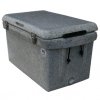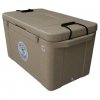Mission2000
New Member
- Messages
- 4
- Likes
- 0
This should be easy as I have changed colors of images in PS a thousand times but for some reason this one is kicking my butt.
I have two images here. One is considered grey granite and the other sandstone. I want to change the grey granite image to look like sandstone. The problem isn't the color change as that changes ok, its that the dark speckles in the grey granite image still hold over once I change it to Sandstone and it doesnt really look the same. Is there an easy way to fix this?
I tried some of the filters but they don't seen to get me where I need to be.
Thanks.


I have two images here. One is considered grey granite and the other sandstone. I want to change the grey granite image to look like sandstone. The problem isn't the color change as that changes ok, its that the dark speckles in the grey granite image still hold over once I change it to Sandstone and it doesnt really look the same. Is there an easy way to fix this?
I tried some of the filters but they don't seen to get me where I need to be.
Thanks.


